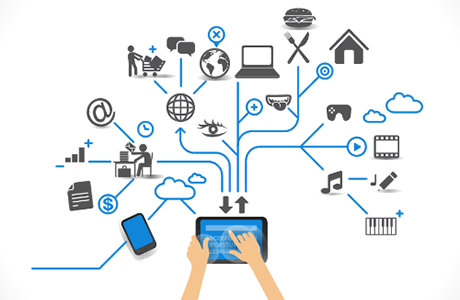The programming trends are driven by greater efficiency, increased customization, and ease of use. The new technologies that deliver one or more of these eclipse the previous generation. It's truly a meritocracy!!
Artificial Intelligence still can't have a totally convincing chat with us, but it's now sophisticated enough to carry out online customer service, and, as it turns out, be your personal assistant. New app x.ai lets you email "Amy" about a meeting you want to set up, and she liaises with you and the other person to find a time that works.
One of the main directions for the current trends in software development is coding in containers. When every process is wrapped in a single container, it spends much fewer resources and provides much more security, as it can be additionally protected using the latest cryptography achievements. This helps keep your data in cloud storage, secure and ready for immediate action.

Long ago, everyone learned to write JavaScript to pop up an alert box or check to see that the email address in the form contained an @ sign. Now HTML Ajax apps are so sophisticated that few people start from scratch. It's simpler to adopt an elaborate framework and write a bit of glue code to implement your business logic. There are now dozens of frameworks like Kendo, Sencha, jQuery Mobile, AngularJS, Ember, Backbone, Meteor JS, and many more, all ready to handle the events and content for your Web apps and pages. Those are merely the Web apps.
There are also a number tuned to offering cross-platform development for the smartphone/tablet world. Technologies like NativeScript, PhoneGap, and Sencha Touch are a few of the options for creating apps out of HTML5 technology
Remember when URLs pointed to Web pages filled with static text and images? How simple and quaint to put all information in a network of separate Web pages called a website. New Web apps are front ends to large databases filled with content. When the Web app wants information, it pulls it from the database and pours it into the local mold. There's no need to mark up the data with all the Web extras needed to build a Web page. The data layer is completely separate from the presentation and formatting layer. Here, the rise of mobile computing is another factor: a single, responsive-designed Web page that work like an app.
Spark is red hot, making the Hadoop model look a bit old. Spark borrows some of the best ideas of Hadoop’s approach to extracting meaning from large volumes of data and updates them with a few solid improvements that make the code run much, much faster. The biggest may be the way that Spark keeps data in fast memory instead of requiring everything be written to the distributed file system.
With Apple Watch hitting the market and many competitors offering their alternatives, along with the long-waited launch of Dr.Watson from IBM, which can turn every wearable device into a mobile health sensor, the need for specialized apps will only grow. Already existing equipment, along with the devices yet to come will produce huge volumes of data and developers will have to build reliable and potent tools, able to visualize the data in order to provide more precise health condition analysis and timely help. This software development trend is sure to provide an ample field of jobs.
Once upon a time, game development meant hiring plenty of developers who wrote everything in C from scratch. Sure, it cost a bazillion dollars, but it looked great. Now, no one can afford the luxury of custom code. Most games developers gave up their pride years ago and use libraries like Unity, Corona, or LibGDX to build their systems. They don't write C code as much as instructions for the libraries. Most of the developers are relieved -- because they don't have to deal with the details, they can concentrate on the game play, narrative arc, characters, and art.